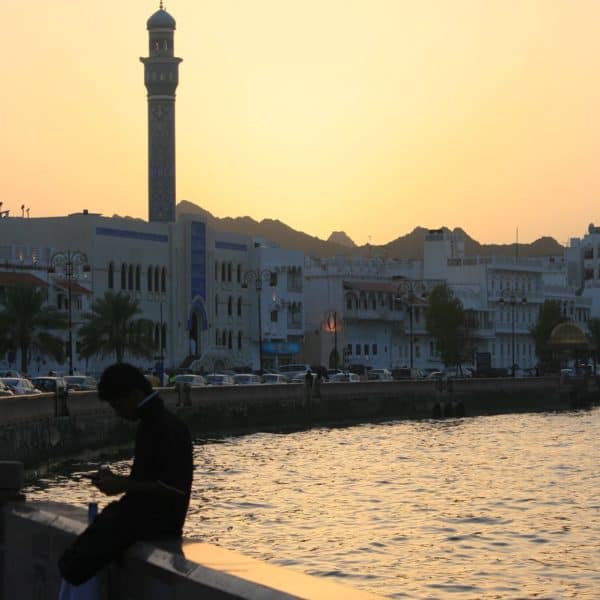 The history of civilization in Muscat stretches back into antiquity, with settlements dating back over 7,000 years. In the 18th century, Muscat was a major regional power whose influence reached as far as Tanzania. Today it serves as the fascinating capital of Oman. Here are a few things to do in this beautiful city.
The history of civilization in Muscat stretches back into antiquity, with settlements dating back over 7,000 years. In the 18th century, Muscat was a major regional power whose influence reached as far as Tanzania. Today it serves as the fascinating capital of Oman. Here are a few things to do in this beautiful city.
 Sultan Qaboos Grand Mosque
Sultan Qaboos Grand Mosque
Sultan Qaboos rose to power in 1970 and has ruled as Sultan of Oman ever since. The mosque that he commissioned can hold 20,000 worshippers. In additional to the sprawling grounds and impressive architecture, the mosque has two unique features. The first is a massive chandelier, the largest Swarovski crystal chandelier in the world. The second is the carpet that covers the floor of the main hall. It’s the second largest carpet in the world, weighing 21 tons. The carpet took 600 weavers four years to complete.
Sultan’s Armed Forces Museum
This museum houses a collection of military vehicles, weapons, and uniforms that trace Oman’s military history. It is also notable because of the location. The museum is housed in the Al Falaj Fort, a 150-year old fortress.
 Muttrah Corniche
Muttrah Corniche
Stretching along the harbor, The Corniche in Muttrah borders Old Muscat. The souq, or market, here has been open for business for 200 years. Shops and stalls disappear into the darkness as alleyways meander away from The Corniche. The smell of frankincense and spices fill the air and silversmiths, tailors, and hawkers sell their wares. Muttrah Fort, built by the Portuguese in the 16th century, sits west of the souq and watches over the harbor.
Desert safari – Beyond Muscat
Escape the city and explore Oman’s vast deserts for a day trip or an overnight camping expedition. Areas like Bawshar and A’Sharqiyah are easy to reach with a 4×4. Enjoy the solitude of the desert or the excitement of dune racing.
More information
To learn more about Muscat, visit Oman’s official tourism site.
